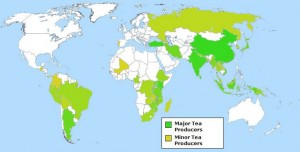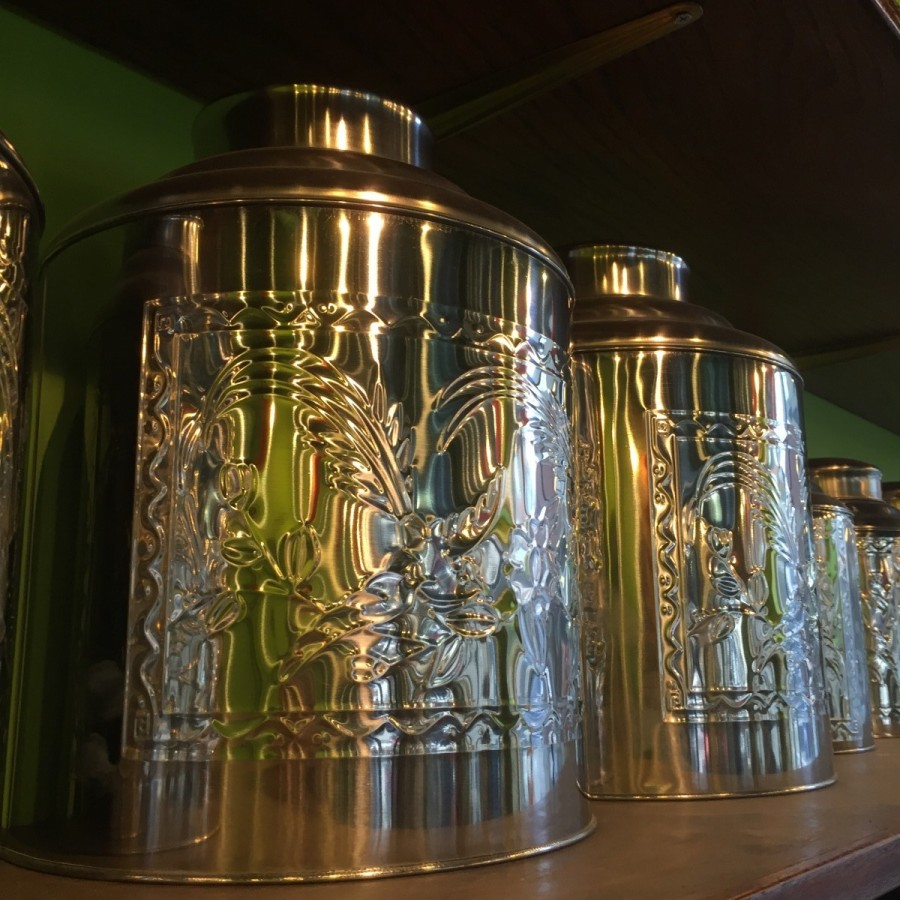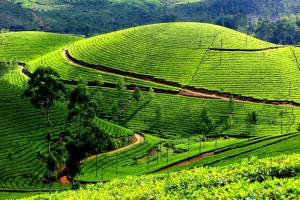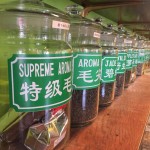Featured image taken by Chloe Landrieu Murphy at Vital Leaf Tea in Seattle with store permission.
Photograph from google noncommercial reuse
The tea plant is an evergreen small tree or shrub native to the camellia sinensis family. Camellia sinensis produces dark green leaves that have a shiny look to them and small white blossoms.
The camellia sinensis plant is native to China, Tibet, and northern India. Camellia sinensis which is the small leaf variety, is best grown in the cool, high mountain regions in central China and Japan. Camellia assamica, considered the broad leaf variety, is best suited to grow in moist, tropical climates found in Northeast India and in Szechuan and Yunnan provinces of China.

Suitable climate for the tea plant can handle light frosts and snow, but not prolonged winters or intense freezes. The dormancy phase of tea does not need to be cold like many other plants. During growing season, the plant does require a fair amount of rainfall and humidity. The highest quality of teas are said to be grown in subtropical climates with seasonality. Elevation plays a huge role in tea quality, as the tea plant can only be grown within a certain range of altitudes. Teas show greater characteristics and desirability at higher elevations, however conditions become too cold. According to RateTea, after about 8,000 feet in elevation, conditions become less and less optimistic (RateTea comprehensive tea resources “Climate, Geography, and Tea Production”). As such, colder and drier climates farther from the equator affect the highest elevation possible to grow tea, and become less and less able regions for growing tea. Tea plants also like to be shielded from direct sunlight and wind, so trees are often planted on the outskirts. “Ambient temperature within 13°C and 28-32°C is conducive for growth of tea. Maximum ambient temperature above 32°C is unfavourable for optimum photosynthesis more so if it is accompanied by low humidity” (Tocklai Tea Research Association “Tea Cultivation”). 200-400cm of well distributed rainfall is needed for the plant, as it does not like long dry periods (Tocklai Tea Research) .
The tea plant has periods of dormancy, usually in winter, and periods of harvest throughout the year. In warmer climates, the plants can have many “flushes” (times when the tea can be plucked). First flush leaves are said to be more delicate, fresh, an floral while the second flush leaves have a more robust, full bodied flavor. First flush runs as early as February and can run through April. The second flush can start in April and may run through May or June. The leaves produced are broader and larger, and are known for a fuller bodied flavor. After that, the monsoon flush goes from June or July through October, and the autumnal flush happens in October and November. (“What is First Flush?” Teatulia Single Garden Teas). After picking and transporting, the tea is typically withered to lose some of its moisture. At this stage the leaves are fragile and can break apart. Rolling will then start the oxidation process as the tea leaves release some of their chemical compounds and aromas. Oxidation is what ultimately sets the pace for what kind of tea the leaf will be. The longer the tea is oxidized, the darker the color and richer the flavor. Black teas are highly oxidized, while white teas have little to no oxidation. Once the desired oxidation level has been reached, the tea is heated to stop the oxidation process. This process must be done correctly in order to ensure cup quality.
Sandy loam soil is preferred as well as virgin soil when propagating Camellia Sinensis. When planting seedbeds should be no wider than 1.5m. In many Indian tea regions beds are prepared flat 10-15 cm above ground level. Nursery beds are enclosed by drains 20cm deep by 20 cm wide that link to an outlet drain. Tea seeds are planted in the nursery beds in rows 1.5cm in the soil with the eye of the seed facing downwards. (Das, Suresh Chandra. “Breeding the Tea Plant (Camelia Sinensis) in India”)
Though tea is grown in a variety of soils the best for production have proven to be light friable loam with porous sub-soil allowing for percolation of water. The soils of southern India’s tea regions contain low calcium content, acidity and an abundance of sesquioxides resulting in strong P fixation. The presence of iron in sub-soil is advantageous in tea growth. Sloping land and hills are most desirable for the growth of Camellia Sinensis but because of the slopes erosion is often a problem that is combated by planting the tea bushes in lines along the contours of the slopes. (Chand, Smriti. “Growth of Tea: Suitable Conditions Required for the Growth of Tea.” YourArticleLibrary)
Tea trees are susceptible to root rot with poorly drained, warm soils. Symptoms of root rot include the plant wilting, the leaves turning yellow, discolored roots and the plant growing poorly or suddenly dying. Well drained soils as well as fungicides can help prevent infection. Insects including tea aphids can cause the leaves to yellow or discolored and distorted spots on the leaves. They secrete a sticky substance that aids in sooty mold growth on the plants. Insecticides are generally only needed for a large infestation and some branches can be jetted with water to shake them loose or a few branches cut. (Plantvillage.org “Common Pests and Diseases”)





